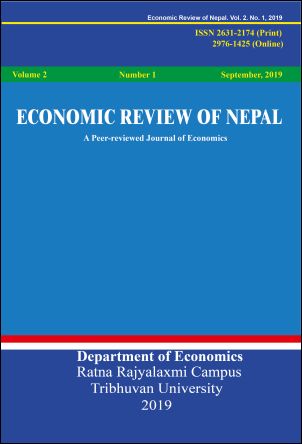The Difference in Paddy Production Through Irrigation and No Irrigation: A Survey of Households in Phalelung Rural Municipality
DOI:
https://doi.org/10.3126/ern.v2i1.53106Keywords:
agriculture production, t test, irrigated farmland, nonirrigated farmland, problems and prospectsAbstract
This study was designed to examine the difference in paddy production through irrigation and no irrigation, and to explore the problems faced by the farmers in the study area in Phalelung Rural Municipality, as well as their possible solutions. As for the method, this study used the descriptive tools (tables, percentage, means, and standard deviation) and inferential tools (t test and interval estimates (95% confidence interval) at the ∝ = .05 level. Kilograms were used as a unit of measuring the paddy produced by 50 households in both irrigated and no irrigated farmlands. Concerning the first objective, the study found statistically significant evidence in favor of the alternative hypothesis (H1), at the specified ∝ = .05 level, that population annual-mean-(paddy) production from the irrigated farmland (μ1) became larger than that from the nonirrigated farmland (μ0). Regarding the finding of second objective, on the problems and prospects of farmers, this study found as main problems the lack of irrigation, faulty irrigation management system, lack of technology, monsoon-based agriculture, and low productivity. According to the farmers in the study area, the possible solutions of the problems could be managing irrigation facilities, providing credit, and providing agro-training to farmers.
Downloads
Downloads
Published
How to Cite
Issue
Section
License
This license enables reusers to distribute, remix, adapt, and build upon the material in any medium or format for noncommercial purposes only, and only so long as attribution is given to the creator.




